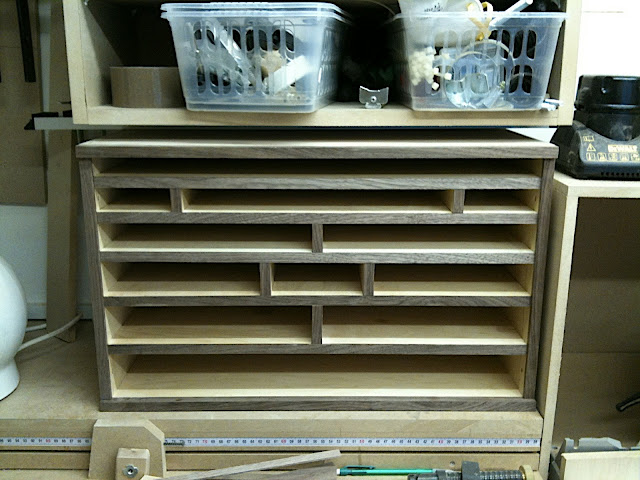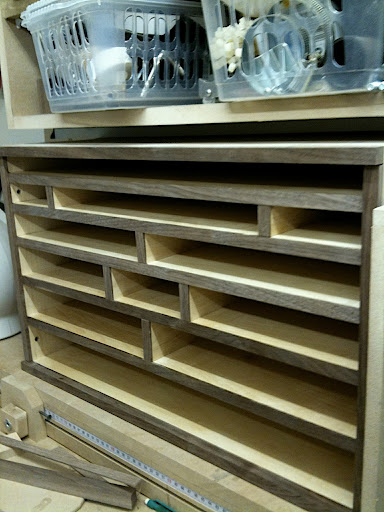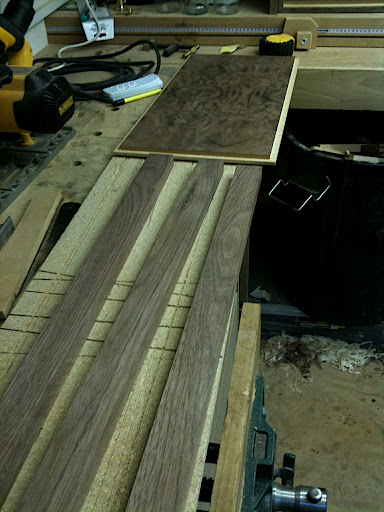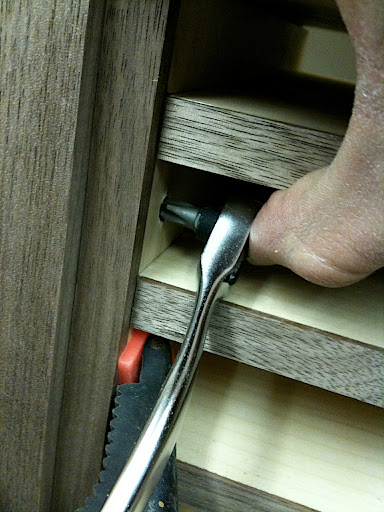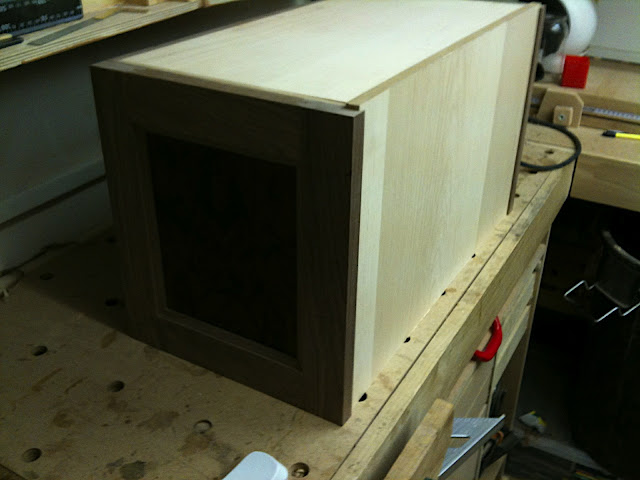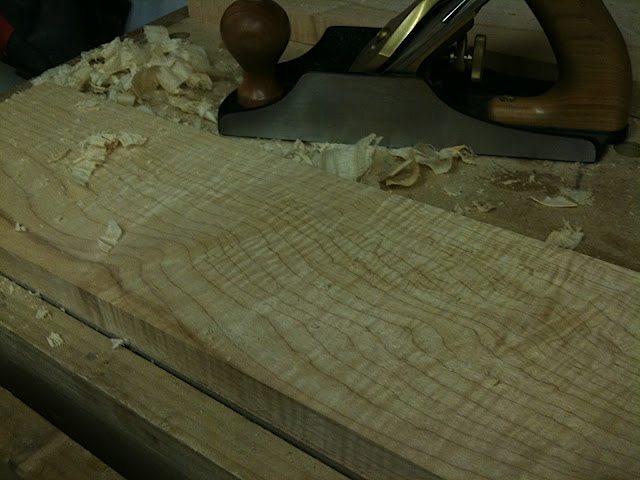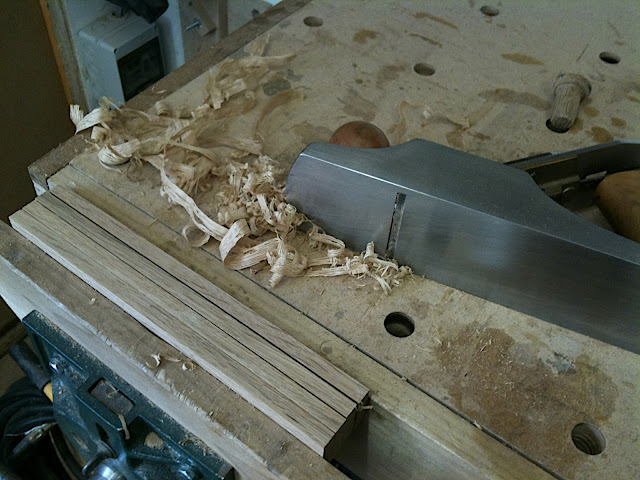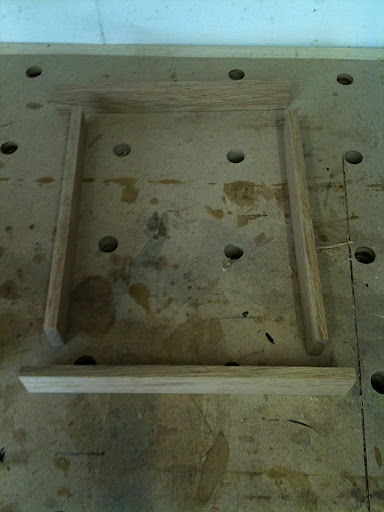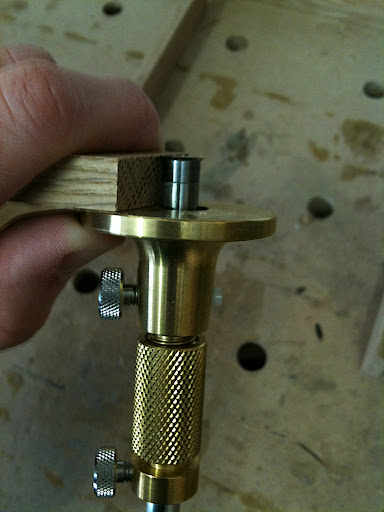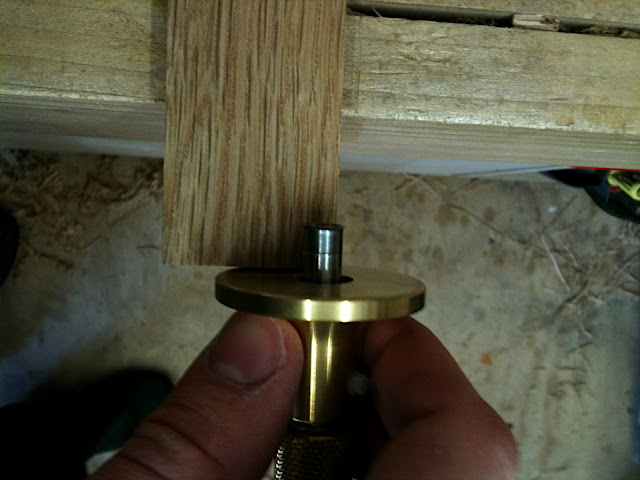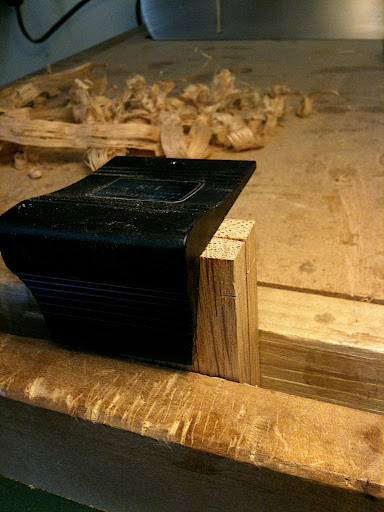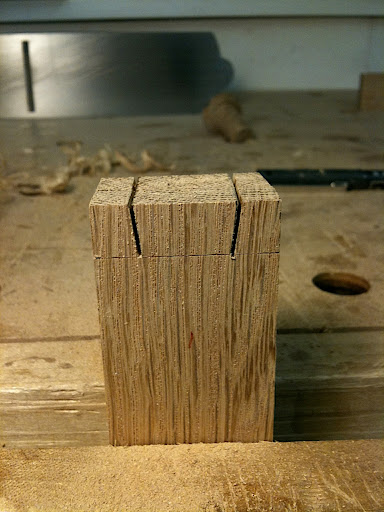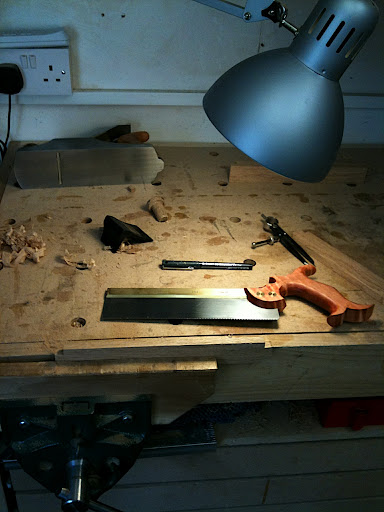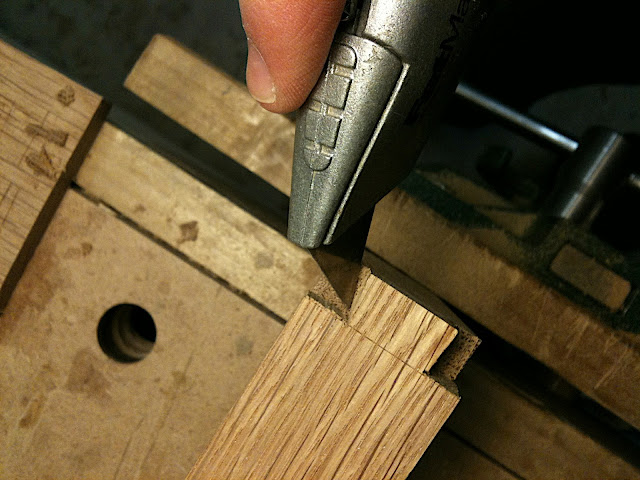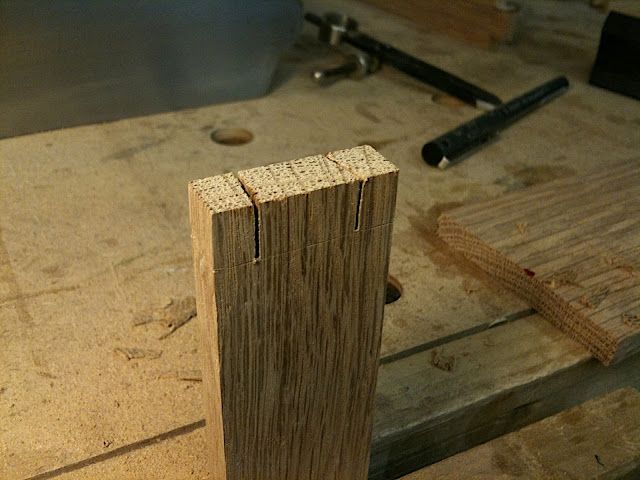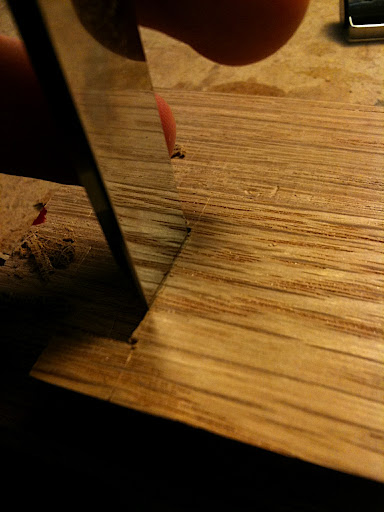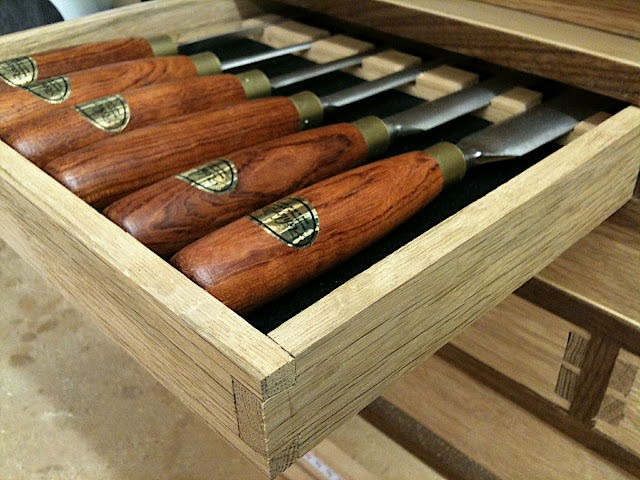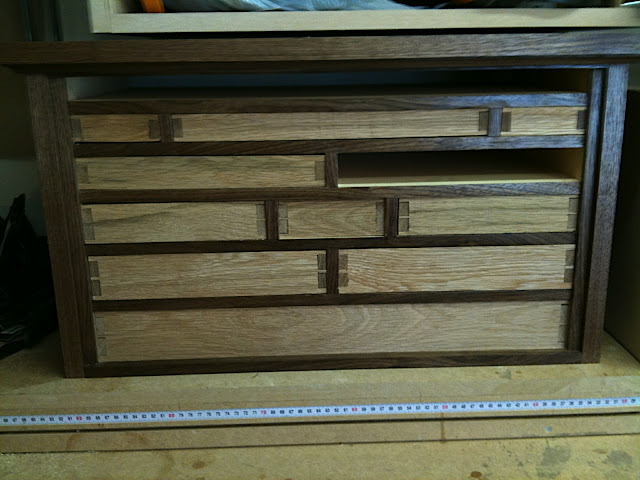Right, firstly, apologies for the lack of activity, but I have actually been doing something since the last post.
I've been working on the drawers, all made from 8mm american white oak and all hand dovetailed. I thought this project would be a great opportunity to brush up on my technique, so here are some tips that you might find useful.
Begin by cutting the components to size and planing everything nice and flat and square
Lay the components out as they will be joined and mark them with cabinet makers triangles:
Set a marking gauge to the thickness of the stock
Then scribe all the way around on the tails, and on the two faces of the end pieces:
This is sometimes known as the "Rob Cosman Technique" i'm using, and I've found that for me it works very effectively. To mark the tails, use a pair of dividers. Because the drawers are so thin, one tail is sufficient, but for more he has a well documented technique for getting nice, even spacing.
Now, stick a pen in the hole you just made and slide a dovetail template up against it. Mark both faces.
Saw on the waste side of the marks. It doesn't actually matter if you follow the line on the face, the critical thing is that it's square across the end and nice and straight.
Now, remove the shoulders. This gave me real trouble when I started. My preferred technique is to saw as close to the line as possible, then trim it perfectly with a chisel. I found the best way is to hold the workpiece and the chisel near the end, and pare it away like I was whittling it.
Marking the pins from the tails gave me the most trouble. It would squirm around or move as I cut it with the knife, but I think I've now got the technique sussed. Firstly, move the handplane as far away as possible, so when you push down in the middle of the piece you get the maximum torque. I found that the most effective tool was actually a good ol' stanley knife. This IMHO gave me a good mark which I had no trouble sawing to. The deep grain of the oak probably didn't help and my nicer, finer knives would probably be a better choice for something with a finer grain.
Now, saw on the waste side of the line. Using the stanley blade meant that the line was easy to see, but the saw has a tendency to move into the center, but after one or two duff joints I nailed the technique. Basically, the first cut needs to be made with confidence. Line the cut up, steady the saw with your other thumb and forefinger, and in one smooth motion make the first cut.
I've tried chopping out the waste ala Frank Klausz, but I found that for hardwoods it was much quicker to use a fretsaw:
After removing the waste, clamp it to a piece of scrap and chop out the waste. A tip I picked up from David Charlesworth's book is that the most important cut is the penultimate one. Cut back until you have less than half a millimeter before putting the chisel right in the groove left by the marking gauge. I tried paring these cuts, but I got much better results by using a small carving mallet.
To begin with, I purposely angled the chisel to create a hollow, but this caused problems when I chopped from the other side. A much better technique is to stand sideways on and get it as near to vertical as possible.
Having a cheap angle poise lamp is a great tip - you can get it to cast a shadow into the groove made by the marking gauge.
Here's one I made earlier:
Just a couple more to go, then I'll make the fronts and design a nice handle:




